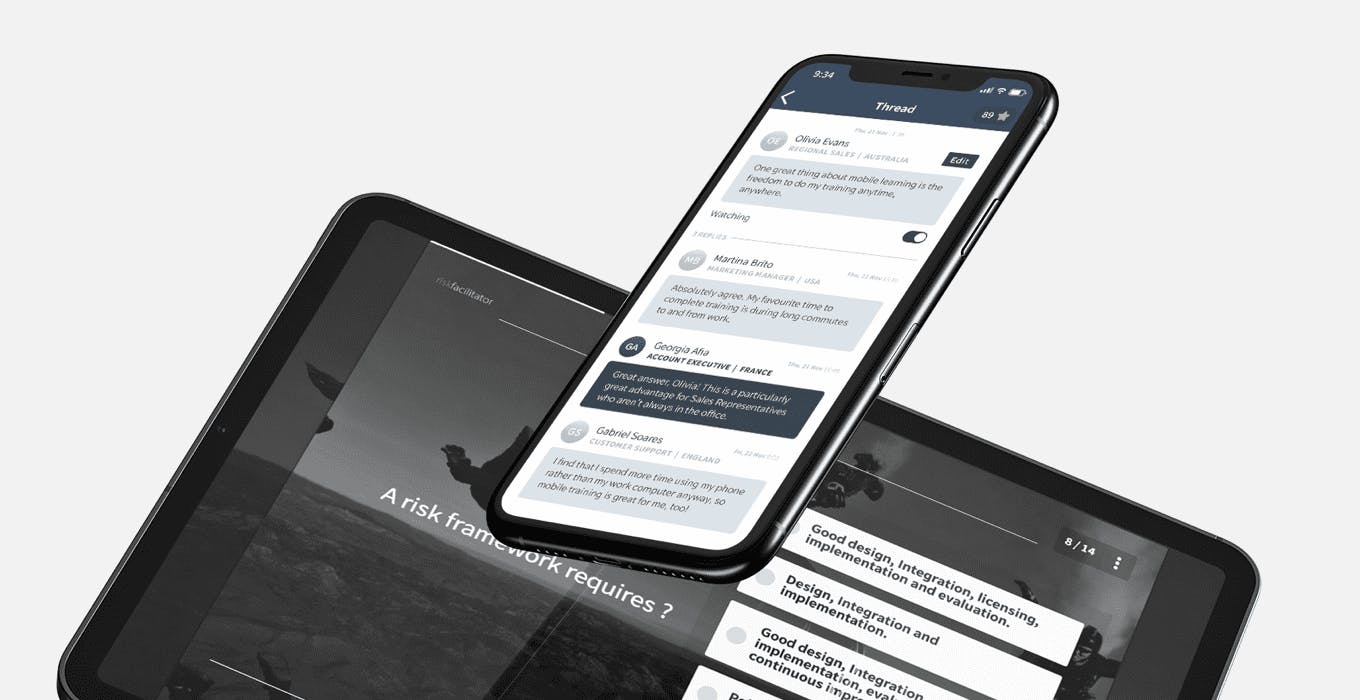Sharing Knowledge and Experience

Sharing knowledge throughout a company is beneficial for employees spanning across different departments and levels of expertise.
The benefits of info sharing is endless in the corporate sphere as employees with different skill sets are able to share their knowledge with others. It is also necessary for the smooth transition of roles from the Baby Boomers to the millennials.

How to encourage knowledge sharing
Knowledge sharing is a process in which knowledge is transferred, either through mutual communication of employees, or some form of collective communication, for example through action in various project teams, or when learning in groups (seminars, etc.).
Also, created documents, procedures, and storage media (manuals, internal publications, databases, knowledge bases, documentation, formal correspondence …), as well as internal communication channels (intranet, formalized procedures, internal records) and developed key documents, such as vision, mission, quality system, etc., enable the transfer and distribution of knowledge.
Knowledge transfer initiatives within an organization can also be formalized, and thus become a commitment. The combination of such formal initiatives and on the other hand the encouragement of a cooperative organizational culture are important supporting factors in the distribution of knowledge. From the point of view of knowledge management, adequate human resource management practice is one that can create motivation and initiative in people to participate in knowledge management processes.
Encouraging knowledge sharing within the knowledge management process in the organization, can be achieved through various practices, some of which:
- Audits of knowledge, or accurate determination of intellectual capital available to the organization at a given time, e.g. (informal interviews, various surveys, group meetings of management and employees
- Cooperation, groups formed around a task or project to encourage the exchange of information, which bring together employees who do not usually come into contact through their regular activities.
- Communities of practice, which consists of employees, who share tasks, projects, interests, goals, usually within a particular work area
- Knowledge mapping, the process of identifying who is the bearer of what knowledge, how and where information is stored within the organization, and how storage locations are
- Mentoring is a management-driven process in which experts within an organization share their knowledge, values , and techniques with new employees
- Social network analysis, as a process of identifying ways to disseminate information in the company through informal channels
- Storytelling a way of communicating organizational values and other implicit forms of knowledge, known also as a method of cases.
- Training and teaching. The traditional method of transferring explicit knowledge, but by experts within the organization.
Employees who are committed to the organization in which they work are more likely to look for ways to improve and be more receptive to new ideas and information. That is why the system of rewarding and paying employees is an important factor in knowledge management initiatives
Connecting people who share the same interests and face common work tasks or work problems results in the exchange of their knowledge, which also creates new knowledge. This process does not have to take place only within the organization, but also in interaction with external groups or individuals.
Building social networks (via Facebook, Twitter, etc.) can also generate knowledge. Today’s technology allows people to communicate face to face in different places.
LMS can also be used to catalog the knowledge of members of the organization and thus provide access to people who have adequate knowledge for a particular problem, and encourage the exchange of knowledge.
The creation of such virtual communities is based on the democratization of knowledge, and their most important characteristic is that through unhindered and unhindered communication and cooperation they contribute to creativity and innovation.
Deploy EdApp LMS today to increase the sharing of knowledge within your teams
No credit card required.
Knowledge sharing tools in education
Document management systems – computer systems for collecting, storing, and retrieving documents. The key thing in the whole story is the automation of communication, notification, and approval of all defined steps in the learning process. Also, there is traceability of the whole process, which allows for better control, measurability, and later improvement.
Knowledge maps and directories – links to sources of new knowledge (documents, databases, and persons). Knowledge maps are created by transferring certain aspects of knowledge into a graphical form that end users can easily understand. Knowledge maps are consciously designed means of communication between those who make maps and those who use them. The knowledge map plays an important role in managing the implementation of knowledge. Effective knowledge mapping brings users several benefits such as economic, structural, and organizational culture and knowledge benefits. The key thing in developing a knowledge map is locating essential knowledge and then organizing this information.
Explicit knowledge databases – used to store explicit (organizational and individual ) knowledge in a repository that authorized users can access to search and acquire new knowledge, as well as store their knowledge in the database. What makes the knowledge base the knowledge base is the existence of a clear relationship between the stored information, or “knowledge” within it. Knowledge bases, therefore, in the simplest sense can be understood as places of storage of knowledge in any form, not necessarily digital, although this is the most common case.

Collaboration systems – provide support for joint projects, enable electronic messaging, coordination, and decision-making in the group as well as holding teleconferencing / videoconferencing. It is a closed and secure system for use with students. Such systems often unite the ability to communicate and share and work on documents together.
Knowledge networks, discussion lists, forums, Web 2.0 services – ensure the exchange of experiences and opinions of experts electronically. These services are extremely important for modern education systems. Discussion rooms and forums provide interactive environments for knowledge sharing. Web 2.0 services support collaborative learning and thus can encourage students to a higher level of creativity and the acquisition of additional skills. They are free and available to everyone and can be used both as a supplement to classical teaching or as an independent learning tool.
Intelligent agents – tools for independent search and/or retrieval of data according to previously set criteria. Agents can learn from the actions of their users and thus get to know their desires and preferences. The main goal of such applications is to reduce the workload of users due to information overload. The intelligent agent, regardless of the domain for which it is intended, replaces the user in certain things, especially in the search domain.
Expert systems – computer programs to support decision-making based on knowledge from a specialist area, consist of a knowledge base of facts and reasoning mechanism. Today’s stage of development of modern information science increasingly enables expert systems to be available at all times. Today, expert systems are used in almost all areas and do everything that is considered to constitute human intelligence. Components of expert systems generate three main tasks of knowledge engineering. These are presentation and storage of large amounts of knowledge in the problem area, activating the use of knowledge to solve problems, and providing answers to user questions.
LMS – enable complete administration of the learning and teaching process. They are developed to create an integrated learning space, i.e. to consolidate accounts for students and teachers, all with the aim of easier management of online courses and online teaching in general. These systems enable easy distribution of teaching materials, encourage cooperation between students, and facilitate communication between students and teachers. Namely, they enable the teacher to manage every aspect of the course (or individual subject) from registration to storage of student results, acceptance of papers and assignments, assessment, etc.
We’ve rounded up the 4 most beneficial factors of sharing knowledge and experience in the workplace.
1. Sharing Knowledge Facilitates Efficiency and Competence
When employees shift jobs or roles, information is consequently lost, inhibiting corporate growth and productivity. Knowledge sharing avoids this issue as knowledge of experienced employees is stored within the company for the utilisation of current and future employees. Much time is often taken by employees to find relevant information for use within their job. This can be minimised and used more productively if information is readily available, promoting an information-sharing workplace culture.
2. Sharing Experience bridges Potential Gaps in Shared Knowledge
The infiltration of knowledge across different functions within companies assists in filling in gaps in knowledge. With older generations inevitably departing the workforce and surge of millennials coming in, it is crucial to pass knowledge to these younger generations to close the generational gap. This ensures an ongoing informative mindset, from which employees can grow personally and professionally.
3. Sharing Knowledge Emphasises a Learning Culture
A nurturing environment in which learning is encouraged makes for a more attractive and adaptive workplace. Creating a learning culture is important to provide learners with the educational needs relevant to the increased performance within their roles. Employees who are aware of the processes within the company are more likely to be able to adapt to changes in the industry and company, as well as increasing their chances of being promoted or take on larger responsibilities.
4. Sharing Knowledge Creates a Support Network
Sharing knowledge brings employees closer together, enabling comfort in asking for assistance or looking for answers. In order to create a strong, close-knit work community, a platform may be established within which useful company-related information can be stored, uniquely accessible to employees.
If you would like to learn more about how EdApp is the ideal authoring tool to create content
Check out EdApp’s other interactive microlearning templates here. If you want to learn more about EdApp’s mobile-focused LMS and authoring tool, get in touch at enquiries@edapp.com. You can also try EdApp’s Mobile LMS for free by signing up here.
Sources
Your Training Edge
Curated course examples
Author
Guest Author Daniel Brown
Daniel Brown is a senior technical editor and writer that has worked in the education and technology sectors for two decades. Their background experience includes curriculum development and course book creation.
